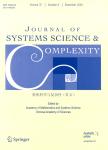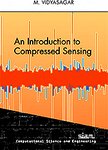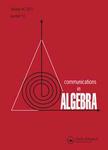版权所有:内蒙古大学图书馆 技术提供:维普资讯• 智图
内蒙古自治区呼和浩特市赛罕区大学西街235号 邮编: 010021
T=题名(书名、题名),A=作者(责任者),K=主题词,P=出版物名称,PU=出版社名称,O=机构(作者单位、学位授予单位、专利申请人),L=中图分类号,C=学科分类号,U=全部字段,Y=年(出版发行年、学位年度、标准发布年)
AND代表“并且”;OR代表“或者”;NOT代表“不包含”;(注意必须大写,运算符两边需空一格)
范例一:(K=图书馆学 OR K=情报学) AND A=范并思 AND Y=1982-2016
范例二:P=计算机应用与软件 AND (U=C++ OR U=Basic) NOT K=Visual AND Y=2011-2016


Compressed sensing is a relatively recent area of research that refers to the recovery of high-dimensional but low-complexity objects from a limited number of measurements. The topic has applications to signal/image processing and computer algorithms, and it draws from a variety of mathematical techniques such as graph theory, probability theory, linear algebra, and optimization. The author presents significant concepts never before discussed as well as new advances in the theory, providing an in-depth initiation to the field of compressed sensing.
An Introduction to Compressed Sensing
contains substantive material on graph theory and the design of binary measurement matrices, which is missing in recent texts despite being poised to play a key role in the future of compressed sensing theory;
covers several new developments in the field and is the only book to thoroughly study the problem of matrix recovery; and
supplies relevant results alongside their proofs in a compact and streamlined presentation that is easy to navigate.
The core audience for this book is engineers, computer scientists, and statisticians who are interested in compressed sensing. Professionals working in image processing, speech processing, or seismic signal processing will also find the book of interest.



电话和邮箱必须正确填写,我们会与您联系确认。
版权所有:内蒙古大学图书馆 技术提供:维普资讯• 智图
内蒙古自治区呼和浩特市赛罕区大学西街235号 邮编: 010021

暂无评论